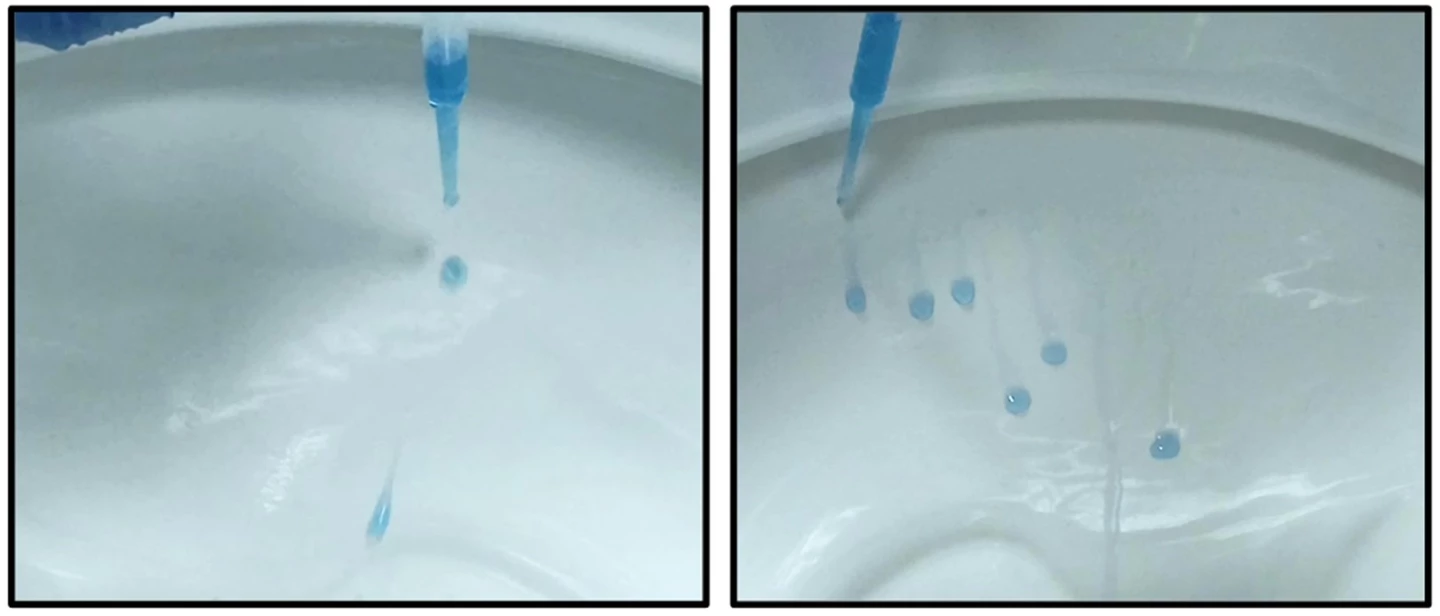It was just this August that we heard about a super-slippery 3D-printed toilet bowl, which bacteria slide right off of. Well, if you want that same sort of functionality in your existing toilet, a special coating may do the trick.
Led by Prof. Mustafa Serdar Onses, a team of scientists at Erciyes University in Turkey set out to develop a new method of grafting hydrophobic (water-repelling) polymers onto surfaces such as porcelain. Although there already are methods of doing so, they're labor-intensive and involve the use of toxic solvents, so they're not conducive to use on everyday items.
With these drawbacks in mind, Onses and colleagues started out by grinding a hydrophobic silicone oil known as polydimethylsiloxane (PDMS) in a ball mill for one hour.
Throughout that whole time, the polymer oil was bombarded by small tungsten carbide balls traveling at high speeds. This process broke apart some of its chemical bonds, forming new molecules. When the milled PDMS was subsequently applied to one side of a sterilized toilet bowl at room temperature, it grafted onto the porcelain within less than one hour, forming what is described as "a durable, oily layer."
The researchers proceeded to test the coating by pouring sterile human urine – combined with E. coli and S. aureus bacteria – into the toilet. Not only was the liquid repelled much more on the treated side of the bowl, but when both sides were swabbed, the coated side was found to inhibit bacterial growth by 99.99% as compared to the untreated side.

As an added bonus, the milled PDMS coating is clear, colorless and doesn't require toxic solvents, plus it's reportedly inexpensive to manufacture.
A paper on the research was recently published in the journal ACS Applied Materials & Interfaces.
Source: American Chemical Society





